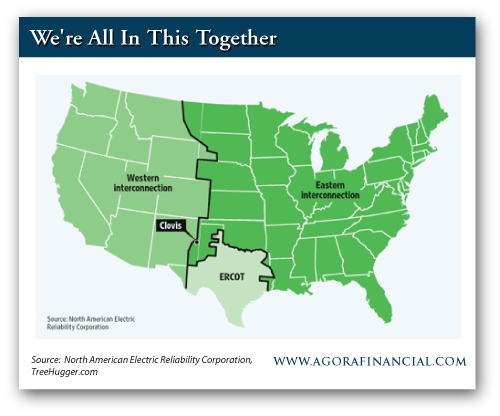

It’s like saying ‘what’s the return on investment in funding the fire department? How much money do we make off that?” In other words, “framing this merely as net profit is so weird. “There are also many benefits here that are not purely monetary – a cleaner grid helps combat climate change, meaning that maybe your grandkids won’t die in weekly lava hurricanes, which does seem pretty worthwhile.” “Set aside that blackouts can cost us a lot of money, as the people of Texas will tell you after what happened to them earlier this year,” said Oliver. The second is cost – one estimate puts decarbonizing the power grid at $2.5tn over the next decade, a difficult price tag for many lawmakers to swallow. But there are several difficulties to refreshed transmission lines, starting with location: building hundreds of miles of lines is a logistical nightmare, and local opposition to bigger towers can derail plans for years. The answer is transmission lines, “the absolute heart of our grid, and we’re going to need more of them”, said Oliver. Basically, how do you get that energy from where it’s made, like a wind farm in Wyoming, to where it is needed, which could be a thousand miles away.” “The key issue is the transmission of it. “The physical generation of renewable energy isn’t really the problem here,” Oliver explained. The necessary upgrades include many relatively small fixes – the installation of micro-grids, weather-proofing, better storage facilities for excess energy – but one huge one: the shift to renewable energy plants such as solar and wind farms, which can’t be built just anywhere.

“Basically, we’ve got a power grid built in the 20th century that is not equipped to deal with the needs and stresses of the 21st,” he continued. “PG&E basically took the same approach to their equipment as Democrats did with Ruth Bader Ginsburg, and in both cases, it didn’t end well. “You can’t just keep something that old in place and expect it to keep working forever,” Oliver said. The combination of issues can be deadly: the 2018 Camp fire in California, the state’s deadliest in history, was ignited when 90-year-old hooks, ignored by Pacific Gas and Energy, gave way and caused power lines to fall on to metal equipment and shower drought-stricken land with sparks. That system is now perilously burdened by age – most power lines were built in the 1950s and 60s with a 50-year life expectancy – and the extreme weather posed by climate change. There are now 600,000 miles of transmission lines and 5.5m miles of local distribution lines, a system of connectivity Oliver described as a “supreme engineering achievement of the 20th century”. The first US electric system was built in 1882 in New York City, and expanded by the rural electrification administration in 1935.

“It’s basically like Major League Baseball in that there are two dominant groups and then assholes in Texas who would rather make up their own rules,” he joked, referring to the Houston Astros cheating scandal. The host surveyed the history of the three US power grids – the eastern interconnection, the western interconnection and the Texas interconnection. “The truth is, if everyone suddenly had an electric car tomorrow, that might be great for the planet, but it could push our grid to its absolute limit,” said Oliver. That’s on top of the imperative of renewable energy to fight climate change – to meet the goal of net zero carbon emissions by 2050, the US will probably require a 40-60% increase in electricity consumption.


 0 kommentar(er)
0 kommentar(er)
